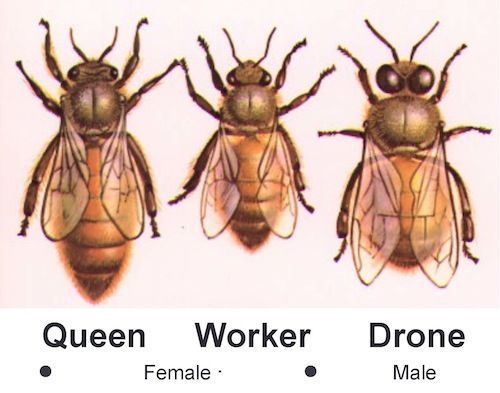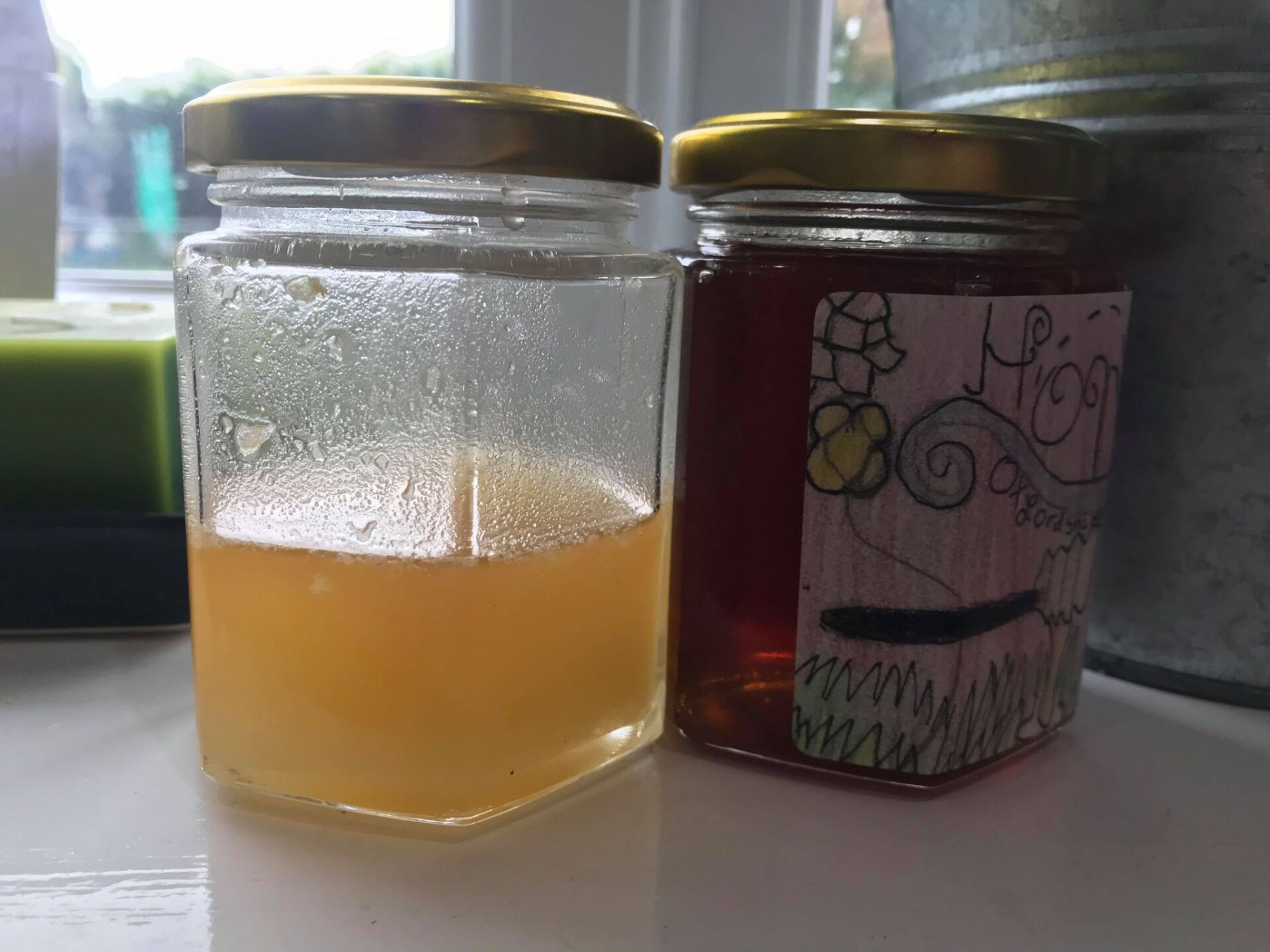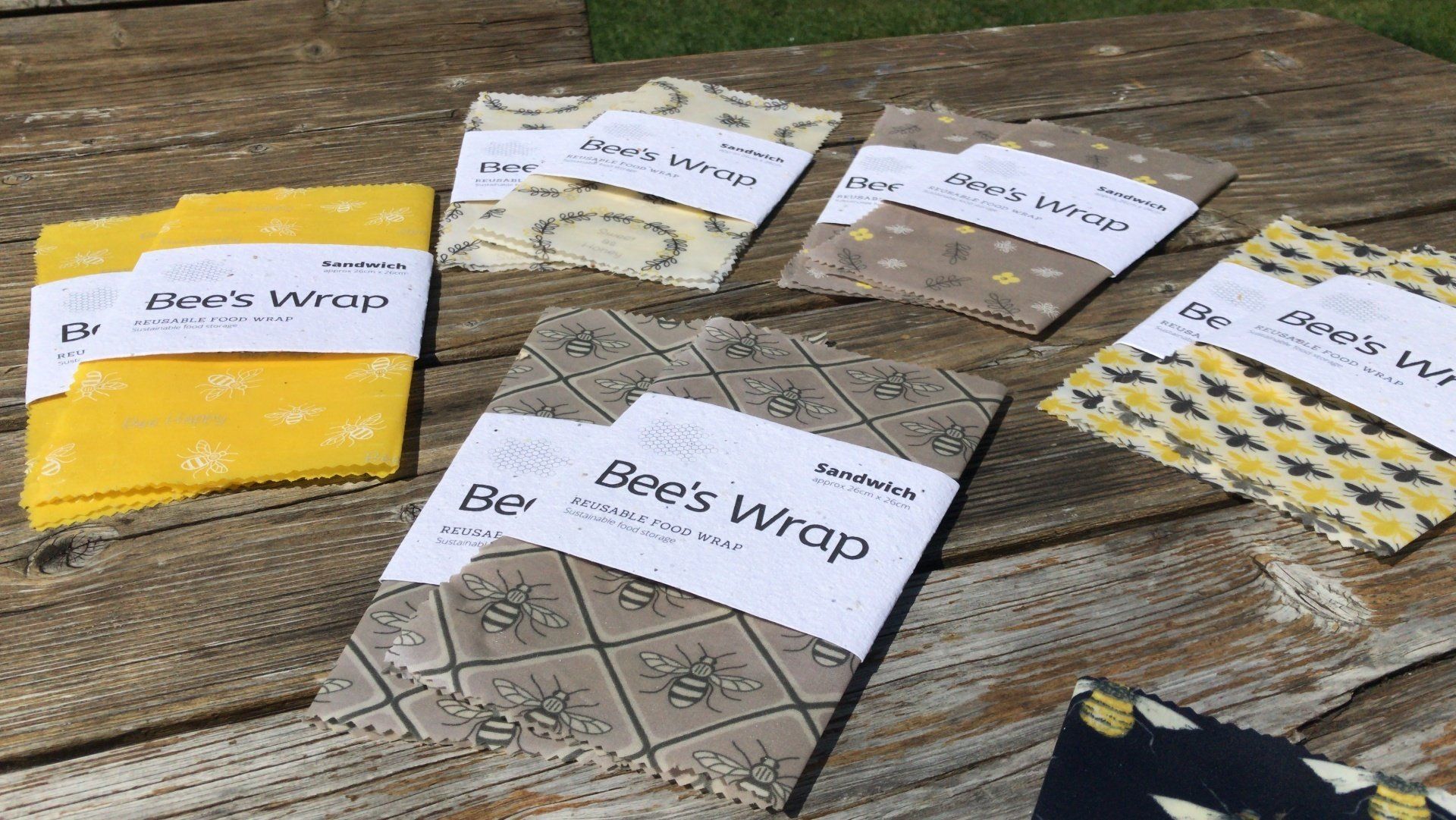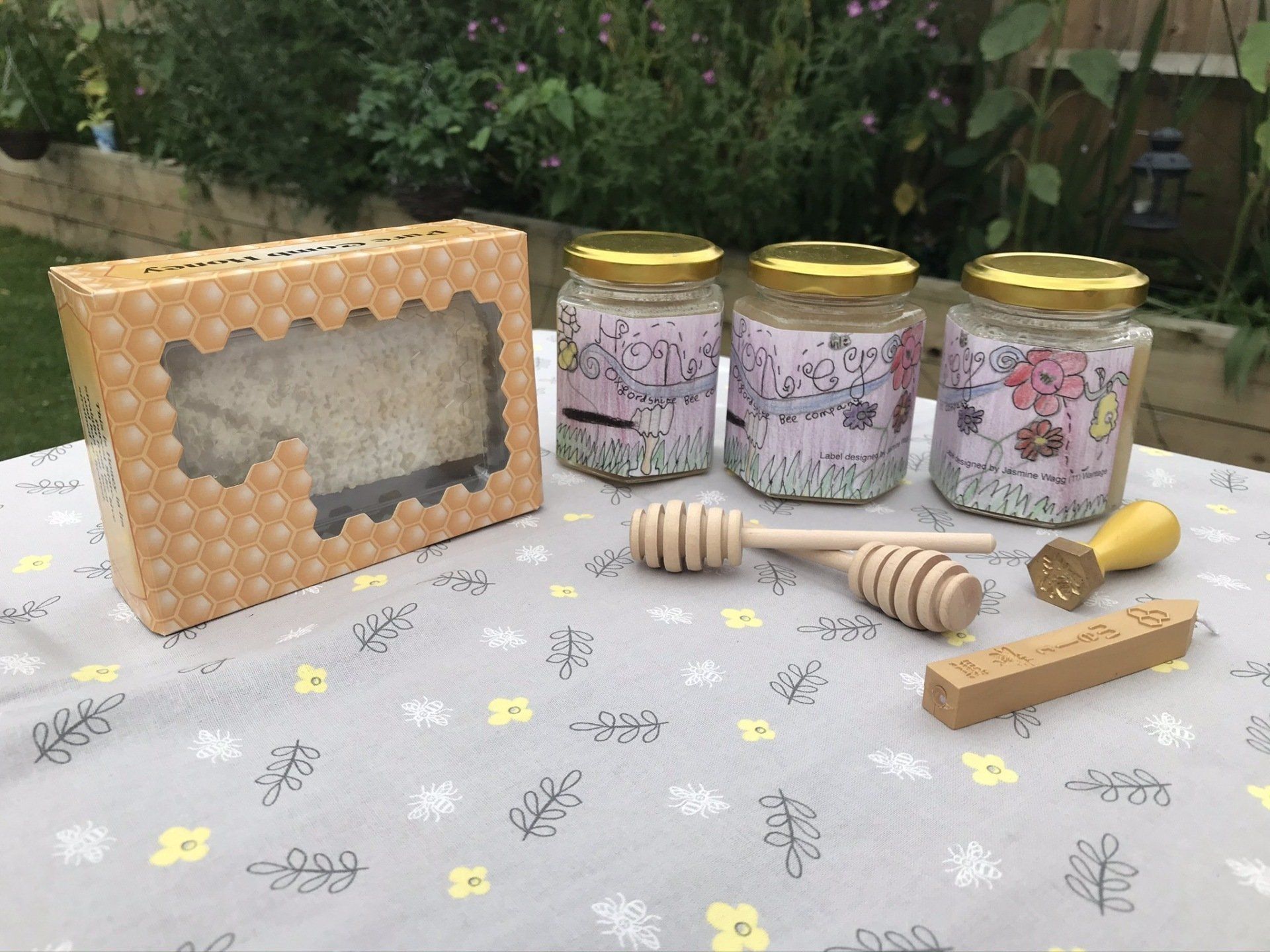Three types of honeybee
Amy Belcher • 13 October 2020
The queen, the worker (females) and the drone (male)

A honeybee colony is made up from three types of bee; female Queen, female workers, and male drones.
The queen bee is the central figure in the colony. While there are many tens of thousands of workers and a much smaller number of male drones, there is only one Queen, and her sole purpose in life is to lay eggs – up to 2,000 per day!
No queen = no bees (which of course means no honey).
The queen bee’s highly specialised anatomy means she is unable to forage for food or perform any of the many essential tasks of survival. She is totally dependent on her worker offspring. If, however, she ‘fails’ in her egg-laying duties (through ill health, poor genetics or simply old age) then the colony will waste no time in raising a replacement, and they will then kill the old queen (their own ‘mother’) – making way for the new one to take over.
Either that or they will swarm. This means that the colony will split; first they will go through that same process, raising a new queen; half will leave with the old queen to set up home elsewhere, while the other half remain with the new queen, and carry on as they were. This leaves both halves of the split temporarily weakened and vulnerable – which can be bad news for a beekeeper, as the remaining colony may then collapse, or take time to recover from the swarming process – time that could have been better spent thriving and producing honey.
But here’s the thing; if the queen cannot fly, then the colony will not swarm. That is why some beekeepers clip the queens wings. Not to ‘keep her prisoner’ but to ensure the colony stays strong. On a personal note, I do not clip my Queen bee’s wings. In fact I don’t know any beekeepers who do. It is mainly the larger scale commercial bee farmers and honey producers who do this.

Sugar, ah honey honey... You are my candy girl... And you've got me wanting you... Honey, ah sugar sugar... You are my candy girl... And you've got me wanting you... The bees are natures finest candy girls but why does some honey taste and look different? In my humble opinion, good raw honey is an altogether different product from the "Grade A Amber" glass jar varieties that line the supermarket shelves. I have spent a lot of time looking at the labels of jars in Waitrose, Sainsburys, Tescos and Aldi. Almost every brand of supermarket honey sold is a blend, accumulated from thousands of colonies, then boiled down until all its dynamic flavours are distilled to produce a standard colour and tasting product. But the raw stuff, harvested at exactly the right time in the season and without one bit of heat? That honey is liquid gold. Honey straight from a hive is full of unique flavours based on its location and the season. With a little background information all of these variations can be appreciated with the same respect and admiration as the tasting of wine. Generally the type and number of flowers where bees collect nectar from determine honey colour, aroma, taste and nutrient content of the honey. Therefore honey colour depends on the vegetation (flowers) of the area where nectar is collected and the season in which it is foraged. There are various honey colours ranging from water-white to deep brown or dark amber all the way to black honey produced. For example in early spring our bees forage on clover, early fruit bearing trees like pear, apple and cherry blossom, and rape seed so the honey this flora and fauna produces is light in colour and sweet in taste. Throughout the summer and into early autumn sunflowers are coming into season which produce a darker, richer tasting honey. The muddle of hedgerow and meadow flowers like poppies and such like produce a lovely balance of light and dark nectar producing a lovely amber honey which has a light floral hint in flavour. You can't beat raw, unpasteurised honey straight from the hive. I've sold out in 2020 but please support your local bee keeper. Find your nearest by visiting you local produce farm shops, farmers markets or you can visit The Vale and Downland beekeepers website for a list of local bee keepers who have honey for sale. Happy honey tasting! From Amy and the bees at Ridgeway Bees.

Lots of hives mean lots of bees and with any luck that means of surplus honey! I don't remove honey unless the bees have made themselves more than enough for winter stores, and if they have then they don't seem to mind sharing the rest with me. Lots of honey means lots of waste wax capping's so once melted down, sieved and cleaned this wax can be used to make a variety of natural beeswax products. During winter 2020 I will be making 100% natural, reusable food wraps by combining some of the wax with other natural products like jojoba oil for its antibacterial properties, pine resin for its "stickiness" and coconut oil for its pliability. We will be adding a full range of balm and whipped body butter products to this range so watch this space. Check out the new Etsy store for details. If you're local I can delivery FOC or you can collect from the workshop on Manor Road or my home in Tirrold Way. #beeswaxwraps #beeswax #sustainableliving #beeswaxwrap #zerowaste #ecofriendly #ecowarrior #plasticfree #handmade #bees #zerowastehome #foodwraps #zerowastemovement #waxwraps #sustainablefoodstorage #plasticfreeliving #zerowastelifestyle #savethebees #reusable #beeswaxfoodwraps #beesofinstagram #ecofriendlyproducts #honeybees #zerowasteliving #zerowastekit #supportlocal #oxfordshirebusiness #smallbusiness #ridgewaybees #ridgewaybeeswraps #wantagebusiness #zerowastegift #theridgewaywantage

